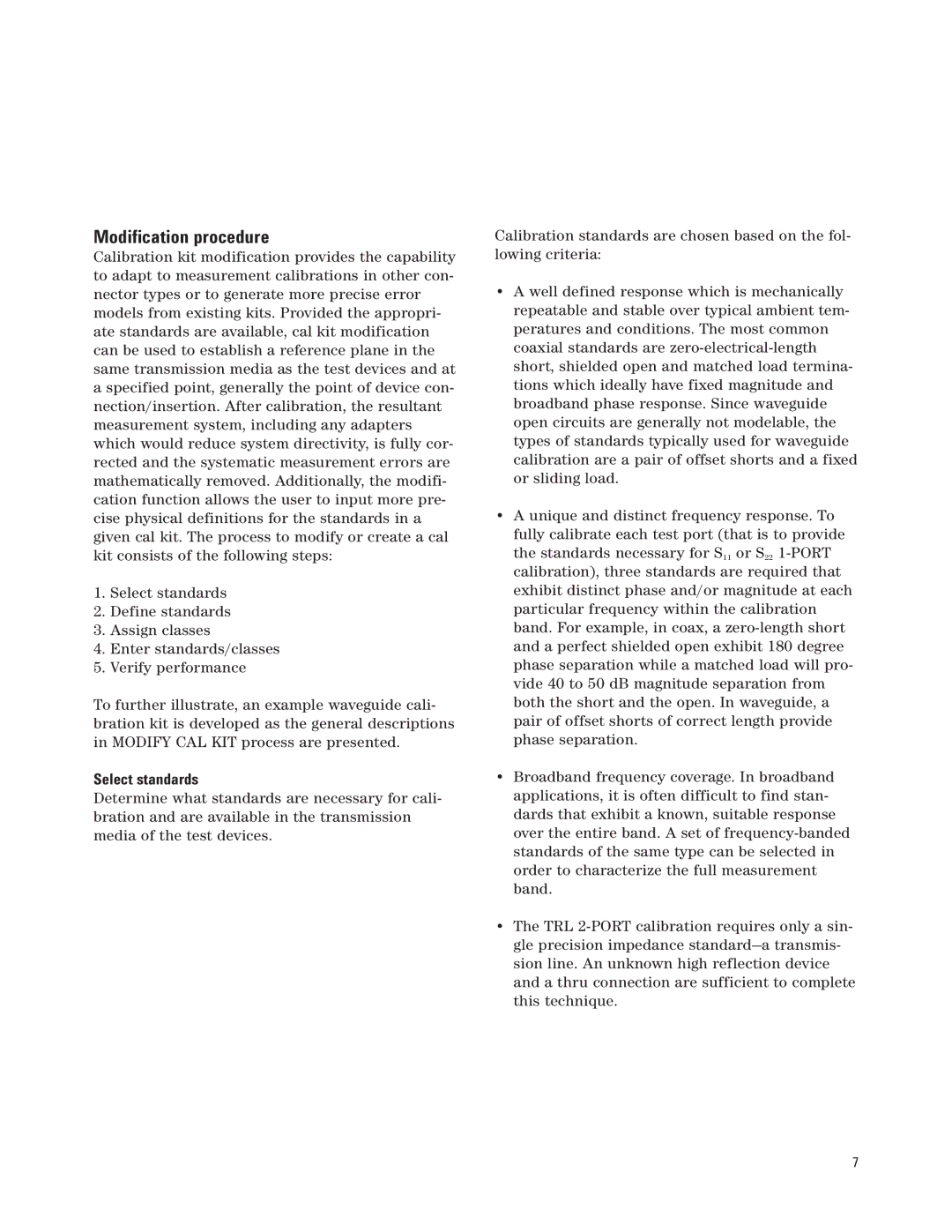Modification procedure
Calibration kit modification provides the capability to adapt to measurement calibrations in other con- nector types or to generate more precise error models from existing kits. Provided the appropri- ate standards are available, cal kit modification can be used to establish a reference plane in the same transmission media as the test devices and at a specified point, generally the point of device con- nection/insertion. After calibration, the resultant measurement system, including any adapters which would reduce system directivity, is fully cor- rected and the systematic measurement errors are mathematically removed. Additionally, the modifi- cation function allows the user to input more pre- cise physical definitions for the standards in a given cal kit. The process to modify or create a cal kit consists of the following steps:
1.Select standards
2.Define standards
3.Assign classes
4.Enter standards/classes
5.Verify performance
To further illustrate, an example waveguide cali- bration kit is developed as the general descriptions in MODIFY CAL KIT process are presented.
Select standards
Determine what standards are necessary for cali- bration and are available in the transmission media of the test devices.
Calibration standards are chosen based on the fol- lowing criteria:
•A well defined response which is mechanically repeatable and stable over typical ambient tem- peratures and conditions. The most common coaxial standards are
•A unique and distinct frequency response. To fully calibrate each test port (that is to provide the standards necessary for S11 or S22
•Broadband frequency coverage. In broadband applications, it is often difficult to find stan- dards that exhibit a known, suitable response over the entire band. A set of
•The TRL
7
